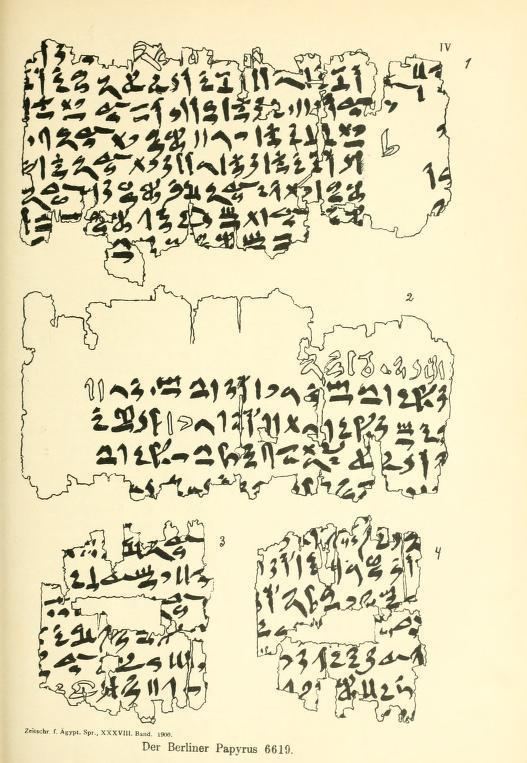 | ||
The Berlin Papyrus 6619, simply called the Berlin Papyrus when the context makes it clear, is an ancient Egyptian papyrus document from the Middle Kingdom, second half of the 12th or 13th dynasty. The two readable fragments were published by Hans Schack-Schackenburg in 1900 and 1902.
The papyrus is one of the primary sources of ancient Egyptian mathematics.
The Berlin Papyrus contains two problems, the first stated as "the area of a square of 100 is equal to that of two smaller squares. The side of one is ½ + ¼ the side of the other." The interest in the question may suggest some knowledge of the Pythagorean theorem, though the papyrus only shows a straightforward solution to a single second degree equation in one unknown. In modern terms, the simultaneous equations x2 + y2 = 100 and x = (3/4)y reduce to the single equation in y: ((3/4)y)2 + y2 = 100, giving the solution y = 8 and x = 6.
